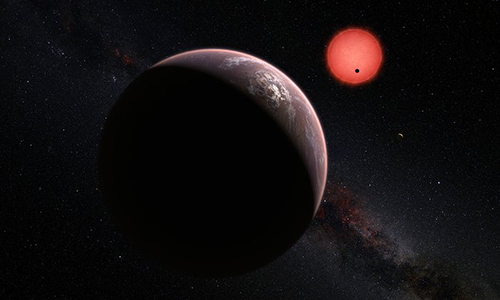Scientists identify 37 active volcanic structures on Venus
Source: Reuters Published: 2020/7/22 19:26:31

This artist's impression shows an imagined view of the three planets orbiting an ultracool dwarf star just 40 light-years from Earth that were discovered using the TRAPPIST telescope at ESO's La Silla Observatory. These worlds have sizes and temperatures similar to those of Venus and Earth and may be the best targets found so far for the search for life outside the Solar System. They are the first planets ever discovered around such a tiny and dim star. Photo: European Southern Observatory
Scientists have identified 37 volcanic structures on Venus that appear to be recently active - and probably still are today - painting the picture of a geologically dynamic planet and not a dormant world as long thought.
The research focused on ring-like structures called coronae, caused by an upwelling of hot rock from deep within the planet's interior, and provided compelling evidence of widespread recent tectonic and magma activity on Venus's surface, researchers said on Monday.
Many scientists had long thought Venus, lacking the plate tectonics that gradually reshape Earth's surface, was essentially dormant geologically for the past half a billion years.
The researchers determined the type of geological features that could exist only in a recently active corona - a telltale trench surrounding the structure. Then they scoured radar images of Venus from NASA's Magellan spacecraft in the 1990s to find coronae that fit the bill. Of 133 coronae examined, 37 appear to have been active in the past 2 million to 3 million years, a blink of the eye in geological time.
Posted in: ODD NEWS